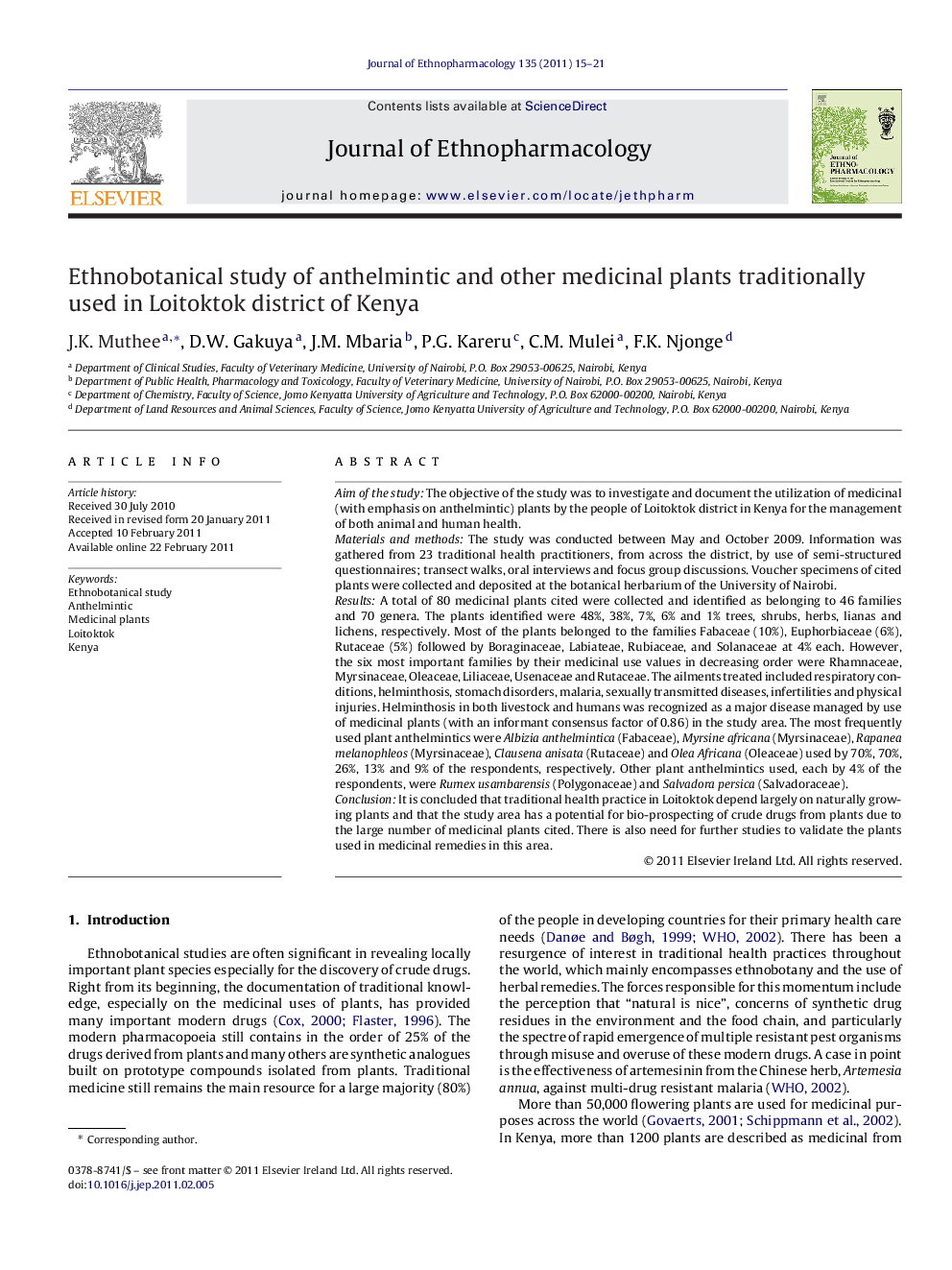| کد مقاله | کد نشریه | سال انتشار | مقاله انگلیسی | نسخه تمام متن |
|---|---|---|---|---|
| 2545798 | 1124005 | 2011 | 7 صفحه PDF | دانلود رایگان |

Aim of the studyThe objective of the study was to investigate and document the utilization of medicinal (with emphasis on anthelmintic) plants by the people of Loitoktok district in Kenya for the management of both animal and human health.Materials and methodsThe study was conducted between May and October 2009. Information was gathered from 23 traditional health practitioners, from across the district, by use of semi-structured questionnaires; transect walks, oral interviews and focus group discussions. Voucher specimens of cited plants were collected and deposited at the botanical herbarium of the University of Nairobi.ResultsA total of 80 medicinal plants cited were collected and identified as belonging to 46 families and 70 genera. The plants identified were 48%, 38%, 7%, 6% and 1% trees, shrubs, herbs, lianas and lichens, respectively. Most of the plants belonged to the families Fabaceae (10%), Euphorbiaceae (6%), Rutaceae (5%) followed by Boraginaceae, Labiateae, Rubiaceae, and Solanaceae at 4% each. However, the six most important families by their medicinal use values in decreasing order were Rhamnaceae, Myrsinaceae, Oleaceae, Liliaceae, Usenaceae and Rutaceae. The ailments treated included respiratory conditions, helminthosis, stomach disorders, malaria, sexually transmitted diseases, infertilities and physical injuries. Helminthosis in both livestock and humans was recognized as a major disease managed by use of medicinal plants (with an informant consensus factor of 0.86) in the study area. The most frequently used plant anthelmintics were Albizia anthelmintica (Fabaceae), Myrsine africana (Myrsinaceae), Rapanea melanophleos (Myrsinaceae), Clausena anisata (Rutaceae) and Olea Africana (Oleaceae) used by 70%, 70%, 26%, 13% and 9% of the respondents, respectively. Other plant anthelmintics used, each by 4% of the respondents, were Rumex usambarensis (Polygonaceae) and Salvadora persica (Salvadoraceae).ConclusionIt is concluded that traditional health practice in Loitoktok depend largely on naturally growing plants and that the study area has a potential for bio-prospecting of crude drugs from plants due to the large number of medicinal plants cited. There is also need for further studies to validate the plants used in medicinal remedies in this area.
The medicinal plants used by the traditional health practitioners in Loitoktok district of Kenya is distributed in 46 families and 70 genera. Fabaceae is the most popular plant family at 10%. Six families (Euphorbiaceae, Rutaceae, Boraginaceae, Labiateae, Rubiaceae and Solanaceae) make up 26% while 51 others comprise 64% of the plants.Figure optionsDownload as PowerPoint slide
Journal: Journal of Ethnopharmacology - Volume 135, Issue 1, 26 April 2011, Pages 15–21